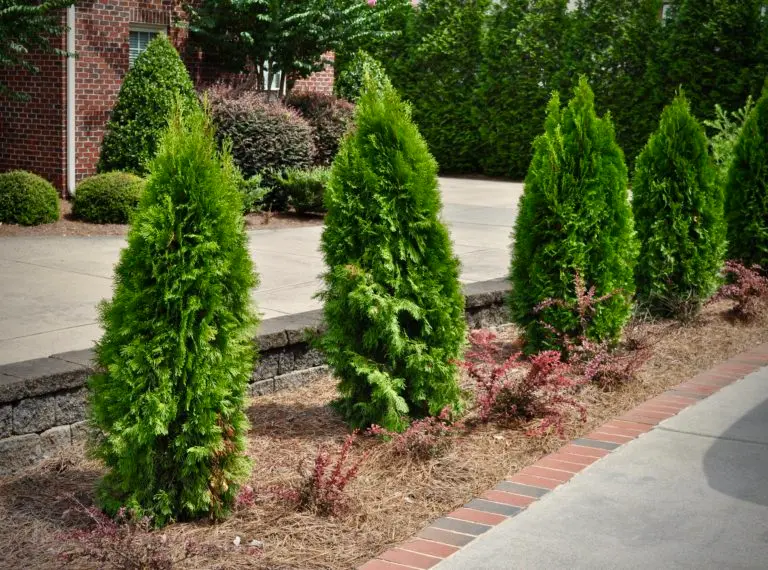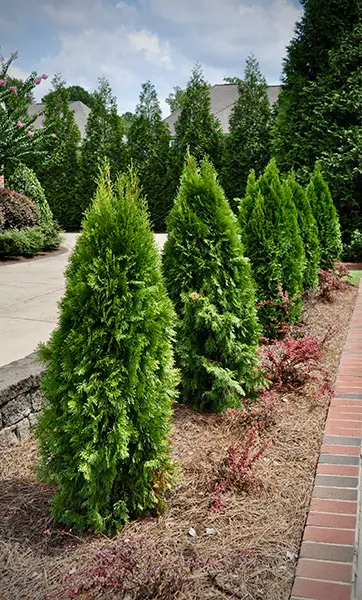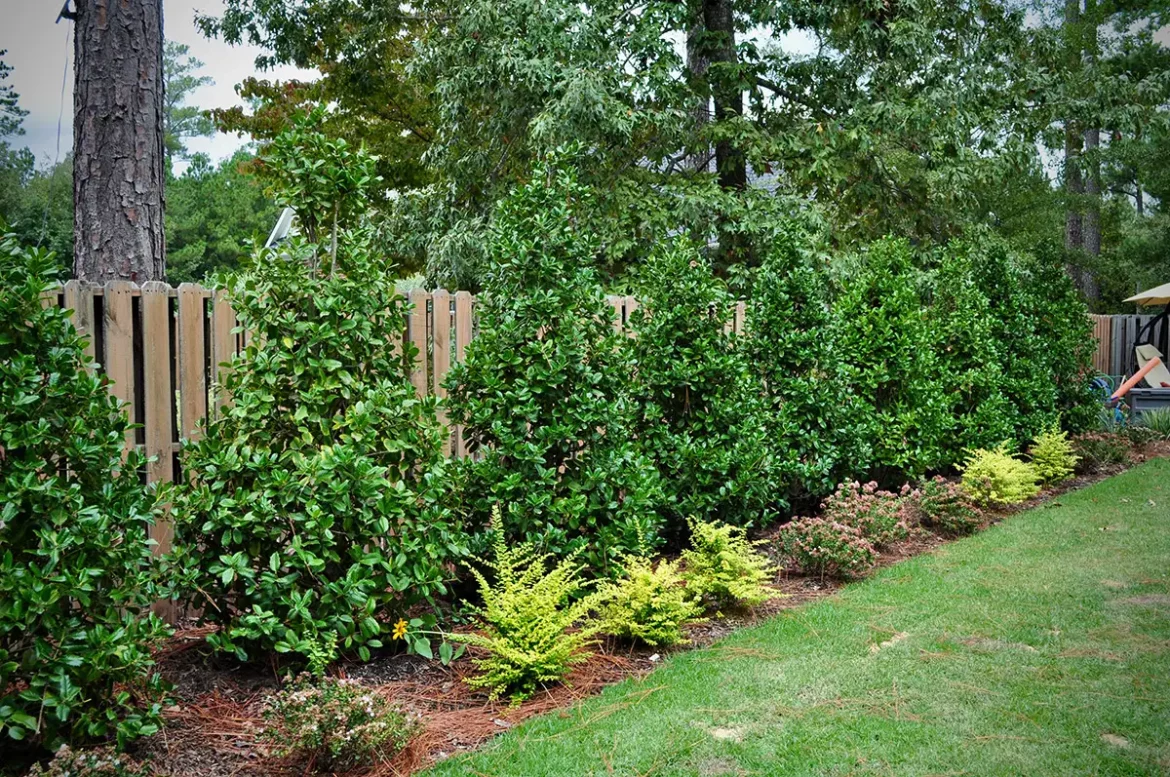
While we love our neighbors (most of the time), we still desire a little bit of privacy. Even if you don’t live in a neighborhood, chances are you still need to create a screen to hide a busy highway, an unsightly ditch, or to make a property line more established. Continue reading to learn how to use plants for privacy.
Know Your Height Requirements
Screening plant material comes in all shapes and sizes. There are some plants, like the Emerald Green Arborvitae (pictured below), that only grow to be 10-12 feet tall, with a spread of 3 feet wide. The Emerald Green works well in smaller areas, while the Murray Cypress works best in more significant scale landscapes, as they reach 30-40 feet tall!
Knowing the height requirements is also essential when planting trees near or under power lines. If trees must be planted in this area, we advise that you select a plant of smaller stature, much like the Emerald Green Arborvitae.
Select Evergreen Plants
To get the most out of your screening plants, it is crucial to select evergreen plants. Evergreen does not only include conifers but also includes hollies, boxwoods, yews, ligustrum, and wax myrtles (pictured below).
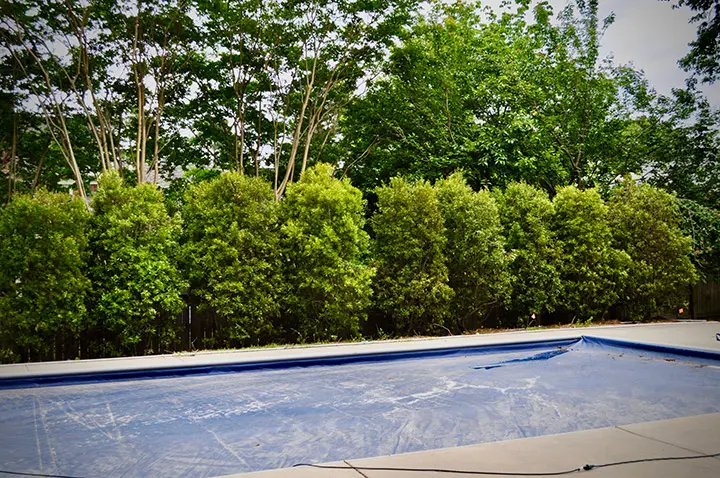
What is Your Timeline
Some homeowners may have the luxury of time. In other words, they can wait on a three-gallon shrub that only stands 3 feet tall to grow to be 15 to 20 feet tall. However, others may need the plants to be already established, with a height already reaching 12 feet in the bucket. Therefore, it is essential to ask, “do I need this screening to create privacy now, or can I wait five years?”
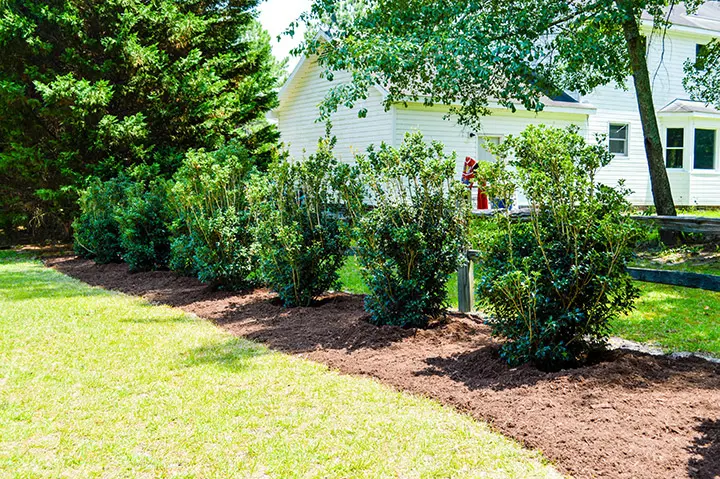
Whatever the reason for privacy, the homeowner has several options when selecting screening plant material. When selecting screening plants, be sure to follow these simple recommendations.

